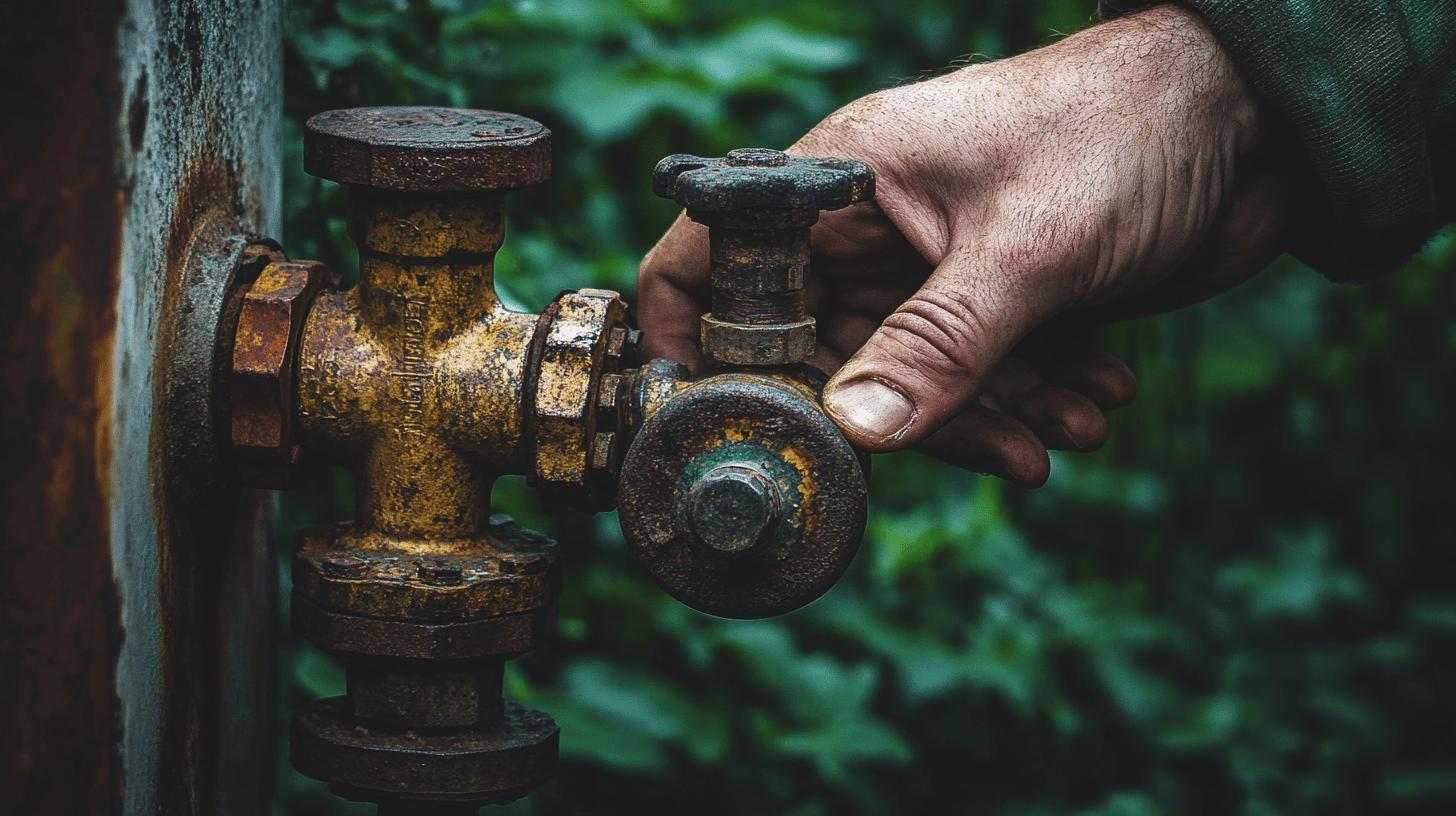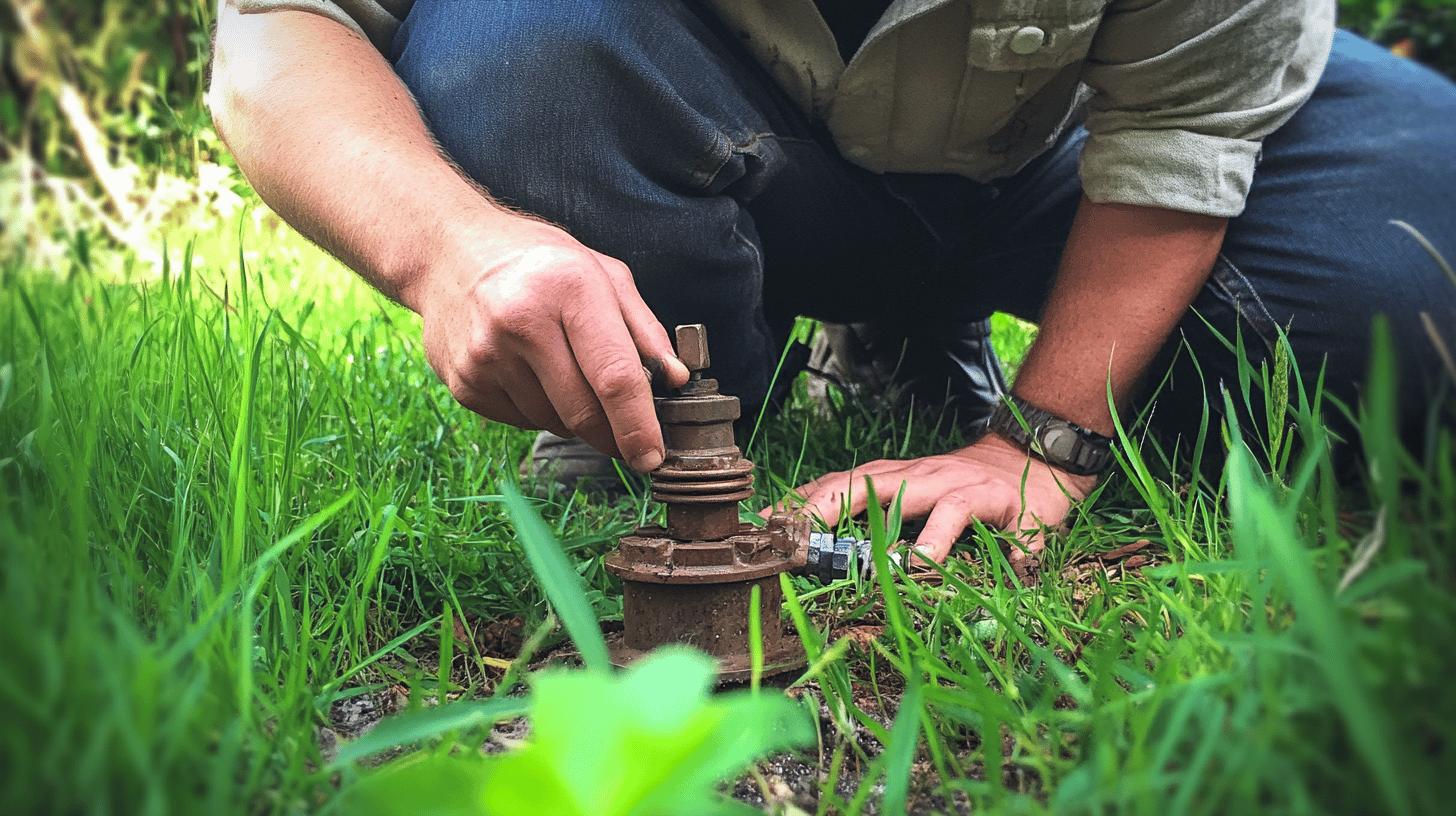TL;DR:
-
Main Water Shut-Off Valve Locations:
- Near street in a covered box or underground pit
- Adjacent to water meter facing the street
- Along property boundary or in front yard utility box
-
Types of Valves:
- Gate Valve: Wheel handle; multiple turns; tight seal.
- Ball Valve: Lever handle; quarter turn; durable.
- Knife Style Valve: Quick quarter turn shut-off.
-
Tools Needed:
-
Water meter key
-
Adjustable wrench
-
Shut Off Process:
- Locate valve cover labeled “water.”
- Use tools to open and turn valve clockwise 180 degrees.
-
Safety Tips:
- Turn only homeowner’s valve.
- Avoid excessive force; maintain valves regularly.
Ever had a plumbing emergency and didn’t know where to shut off the water? Finding your main water shut-off valve can save you a lot of trouble during a leak. It’s usually near the street or in a covered box at the edge of your property. This guide will show you how to find it quickly so you can stop water damage before it gets worse.
Locating the Main Water Shut Off Valve Outside
To find your main water shut-off valve outside, check areas like near the street or your property boundary, often in a covered box or underground pit. It’s also commonly located near your water meter, usually on the side of your house facing the street. If you can’t find it easily, check your property inspection report, which often has details about utility placements. You can also contact your local water department for help. Knowing where your shut-off valve is can save you from bigger water damage during an emergency.
Common locations to check for the main water shut-off valve include:
- Near the street, in a covered box or an underground pit
- Adjacent to the water meter on the house perimeter facing the street
- Along the property boundary line
- Within a utility box near the front yard
Once you’ve found the possible locations, look for any labels or markings like “water” or “meter” to confirm the valve. If there are no markings, gently lift any covers or lids in those areas to check for the valve. Be sure you’re focusing on the right one—the homeowner’s valve, not the water company’s. Once you’ve located it, make sure you know how to turn it off quickly to avoid major water damage in case of an emergency.
Identifying Different Types of Outdoor Water Shut Off Valves

Knowing the type of outdoor water shut-off valve you have is key for quick and effective operation. The two most common types are gate valves and ball valves.
A gate valve works by raising or lowering a metal gate inside the valve to control the water flow. It has a round, wheel-like handle, and you’ll need to turn it several times to fully open or close the valve. Gate valves are reliable for main shut-offs because they create a tight seal when fully closed.
On the other hand, ball valves use a rotating ball with a hole to control water flow. They’re quick to operate and durable, with a lever handle that only needs a quarter turn to shut off the water. The handle’s position gives a clear visual cue: if it’s parallel to the pipe, the valve is open; when perpendicular, it’s closed.
Recognizing which type you have can save time and effort, especially during emergencies.
- Gate Valve: Features a wheel-shaped handle; requires multiple turns to operate; provides a tight seal.
- Ball Valve: Operates with a lever handle; needs only a quarter turn; known for durability.
- Knife Style Valve: Opens with a quarter turn; often used for quick shut-off needs.
Knowing the type of valve you have is key for handling emergencies efficiently. It helps you use the right method to shut off the water quickly, reducing the risk of water damage. Properly operating the valve also prevents unnecessary wear, keeping it in good condition and extending its lifespan, which helps maintain your plumbing system’s overall health.
Tools and Techniques for Shutting Off the Water Supply Outside
Having the right tools is essential when you need to shut off the water supply at the street. The most common tool is a water meter key, which fits most water system valves. If the valve allows, an adjustable wrench can also work. You can easily find these tools at hardware stores, and they’re crucial for managing water flow during emergencies like leaks or burst pipes.
Follow these steps to safely turn off the water supply:
-
Locate the Valve: The valve is typically found in a covered box on the sidewalk or near the property boundary. Look for a concrete lid labeled “water.”
-
Gather Your Tools: You need a water meter key or an adjustable wrench. Keep these tools handy for quick access.
-
Remove the Cover: Use the water meter key to lift the cover carefully. Be cautious of dirt or debris that might block the valve.
-
Position the Key: Insert the water meter key into the valve slot. Ensure it fits securely to avoid slippage.
-
Turn the Valve: Rotate the key 180 degrees to the right until the valve stops. This action should cut off the water supply to your home.
-
Check Inside: Verify that the water is off by turning on a faucet inside your home. If water still flows, double-check the valve position and adjust if needed.
Handle the valve gently to avoid damage. Over time, valves can get stiff or corroded, so using too much force can cause them to break. Regular maintenance, like lubricating them occasionally and checking for rust, can help extend the valve’s lifespan. By following these tips, you can better manage your home’s water system and reduce the risk of water damage during emergencies.
Safety Tips and Precautions When Handling Outdoor Water Shut Off Valves

When dealing with outdoor water shut-off valves, it’s important to make sure you’re handling the right one to avoid complications. Don’t turn off the street-side valve, as it’s meant for the water company, and tampering with it could disrupt your neighborhood’s water supply. Know exactly where your shut-off valve is located, especially in emergencies. A burst pipe can release 10 to 15 gallons of water per minute, leading to major property damage.
Incorrect handling of valves can cause damage, making it impossible to control the water flow when you need it most. To keep your home safe and avoid costly mistakes, be sure to follow proper safety tips and precautions when managing these valves.
- Make sure you turn the correct valve for homeowner use, not the street side valve.
- Use proper tools, like a water meter key, to avoid slipping or damaging the valve.
- Avoid excessive force; valves may be corroded or stiff.
- Regularly check and maintain valves to ensure they work smoothly when needed.
By following these safety tips, you can take control of your home’s water system during emergencies, minimizing damage and preventing any disruptions to your water service.
Final Words
Knowing how to find and manage your outdoor water shut-off valve is essential. Start by locating it, usually near the property boundary or in a covered box at the street, so you’re ready in emergencies. Understand whether you have a gate or ball valve to operate it properly. Make sure you have the right tools, like a water meter key, for an easy shut-off. Always follow safety precautions to avoid damage or accidents. With these steps, you’ll be prepared to handle any water issues quickly and safely.
FAQ
Where is my exterior water shut-off valve?
The main exterior water shut-off valve is typically near your property boundary, inside a covered box at the street, or near the water meter. It’s often on the house perimeter facing the street.
Do all houses have an exterior water shut-off valve?
Not all houses have an exterior water shut-off valve. Newer homes or those with specific plumbing designs might lack this feature. Check your property inspection report or consult with the local water department for more details.
What does an outside water valve look like?
An outside water valve usually appears as a round handle or a lever. It can be a gate or ball valve, depending on your plumbing system. It is housed within a covered box or pit for protection.
Why can’t I find my main water shut-off valve?
If you can’t find your main water shut-off valve, refer to your property inspection report, or contact your local water department. The valve could be hidden behind landscaping or under soil.
Who is responsible for the main water shut-off valve at the street?
The water company typically manages the street-side main water shut-off valve, and it’s not for homeowner use. Contact them for issues related to the street-side valves.
How to turn on water valve outside?
To turn on an outside water valve, locate the valve, then turn the handle or use a meter key to rotate it counterclockwise until the water flow resumes. Avoid applying excessive force.
What tools are needed for the water main shut-off valve at the street?
You need a water meter key or an adjustable wrench to shut off the water main valve at the street. These tools help turn the valve precisely without exerting undue pressure.
How do I safely handle outdoor water shut-off valves?
Handle outdoor water shut-off valves gently, using the appropriate tools like a meter key. If unsure, consult a professional to avoid damage or leaks. Always ensure you’re operating the correct valve to prevent water supply interruptions.

